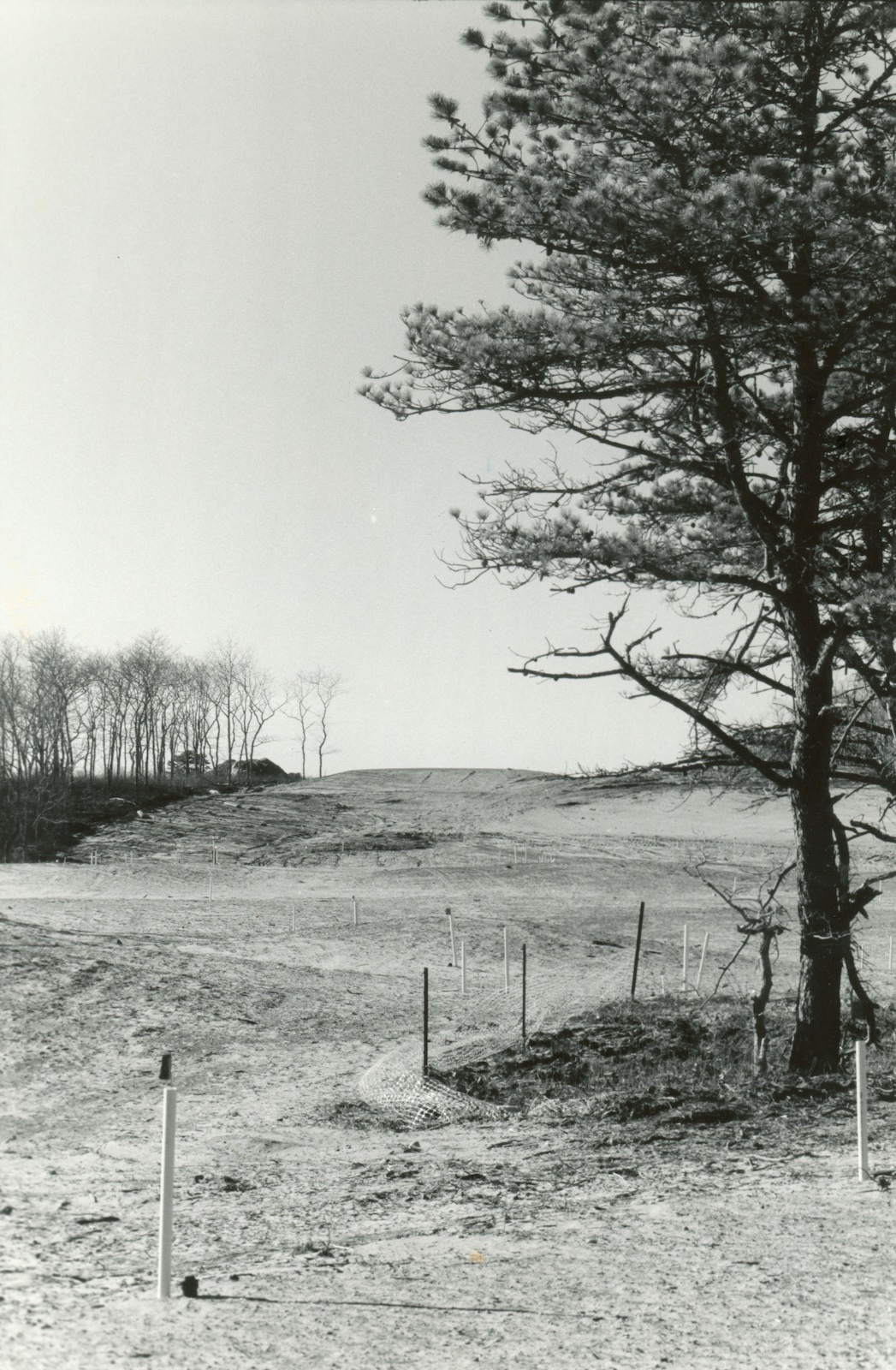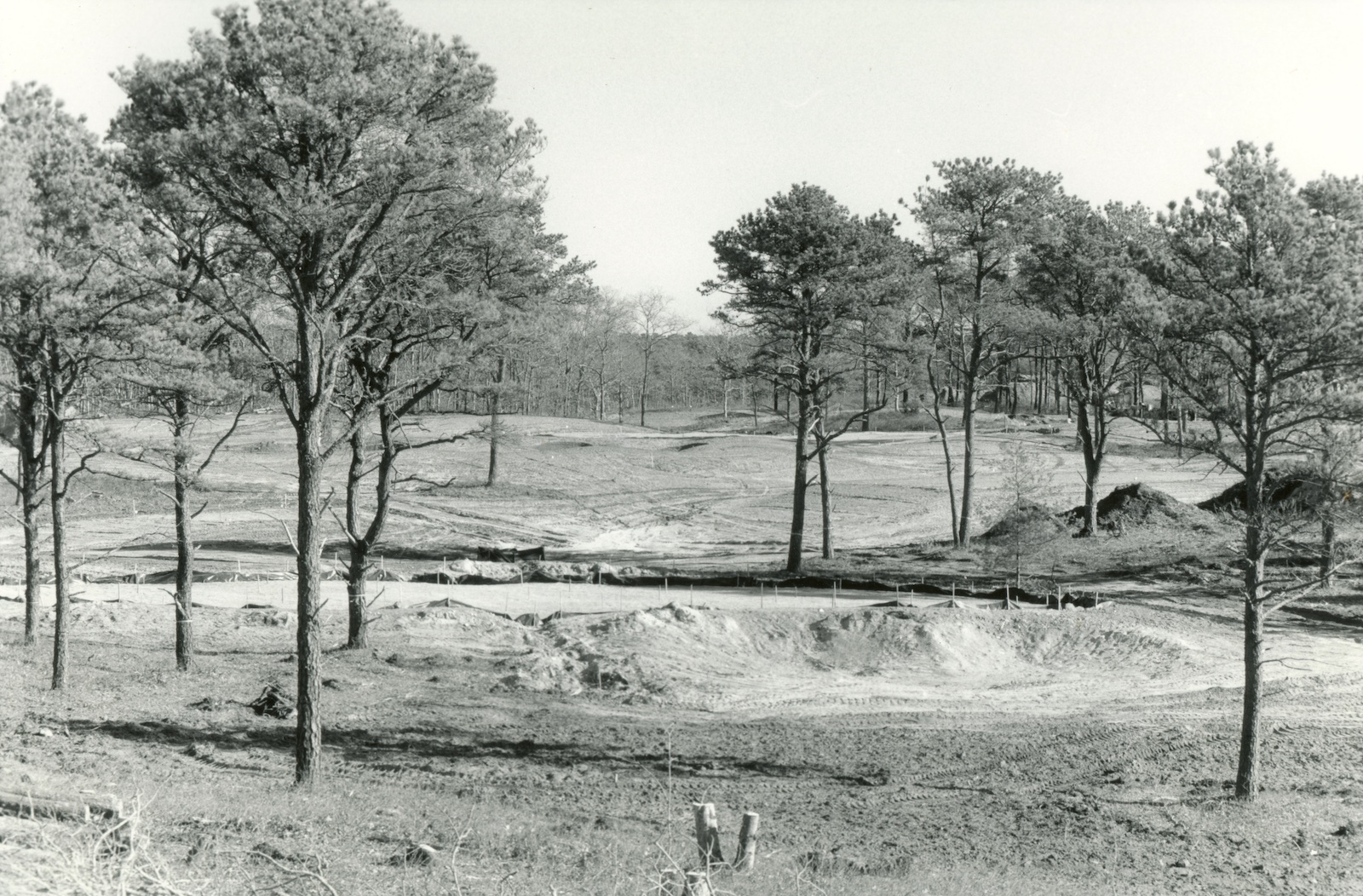The trees have been cleared, the land smoothed over; the contours of a new 18-hole golf course in Edgartown are taking shape. While it is months before grass seed takes root, the landscape already presents vistas never seen before. The Vineyard Golf Club project is well under way.
The sever cold of this winter has slowed the effort. Owen Larkin, the managing partner of the club, said an official opening of the club to members is still many months away. “It depends on Mother Nature and what she allows. The last 60 days have been 13 degrees colder than the same period of the last two years. That has slowed us down,” The ground surface is frozen to a depth of six inches.
“We won’t do anything quickly. We don’t want to take a risk of hurting the course,” Mr. Larkin said.
On a cold and sunny morning this week, a walk through the property revealed a landscape transformed in the space of a year. Work began last April in the wooded forest once known as Vineyard Acres II, a failed subdivision. Today there are vast open meadows where, with a little imagination, the outlines of the new gold course can be seen. There are stretches of open land measuring as much as 500 yards in length, extending over hills and small valleys. Some of the fairways are as wide as a football field. Grassy land is separated from familiar scrub oak trees. Tall oaks and pines line the landscape.
New man-made ponds are covered with ice in the shadows of tall pitch pines. Summer is a long way off from this winter moonscape. A large truck dumps topsoil into a screening device.
Jeff W. Carlson, 51, the superintendent, began his involvement with the project in the fall of 1998, when the only work was paperwork, the lengthy local and state application process. Transforming the wooded 236 acres into a golf course requires heavy equipment, the same bulldozers and equipment used to cut a highway. One piece of unusual equipment used in the clearing was a huge woodchipper from western Massachusetts, capable of consuming and chipping an entire tree.
Since April, about 100 acres have been cleared. Of the remaining land, 30 acres of frost bottom will be left alone. Mr. Carlson said this bit of unique habitat is being set aside and held up as an intriguing part of the recreational facility.
On their busiest of days last fall, there were as many as 40 people on the golf course, working with a variety of equipment.
There were pleasant surprises for the developers in exercising their plan, the most notable concerning topography. Mr. Larkin said: “We knew this was a lovely piece of land, but what we discovered was that it was magnificent and lended itself naturally to being a golf course.” Very little land was moved. “We didn’t realize the rolling hills and valleys and changing elevation were already there. We got really lucky.”
The fairways will be reminders of older golf courses in Scotland. “It is a heathland golf course,” Mr. Carlson said. There are plenty of open meadows and indigenous vegetation. Since the beginning, designers have stressed they wanted to build a low-impact golf course. Carlos Montoya, an Island grower and landscaper, and the Sheriff’s Meadow Foundation were engaged to provide creative input on the management of native grasslands and other vegetation.
Tom Mackenzie, a designer, and Donald Steele, the lead architect of Donal Steele Ltd. in England, drew out the course. Mr. Steele has worked on the St. Andrew’s Golf Club in Scotland, the oldest and most respected golf course in the world.
Visitors to the new golf course will find one characteristic associated with British golf design, its revetted, sod wall bunkers. “These bunkers evolved over hundreds of years. In Scotland sheep found shelter from the winds by digging themselves into hollows, creating bunkers,” Mr. Carlson said. These bunkers are unusual among gold courses around the world and they will be a signature of this Vineyard course.
In the days ahead, ground will be broken for a new 18,000-square-foot clubhouse. The house is a summer facility with open porches, accommodating all the functions of the new club, including a pro shop and restaurant.
Even before the grass can be planted, the irrigation system has to be put beneath the surface. Digging those ditches will resume when the weather warms.
The open vistas on the golf course were well apparent months ago. Mr. Larkin said he spent a lot of time last year visiting one of his favorite spots, at the sixth tee. “I can make a 180-degree turn and look aver the lake, see one hole, a pine forest on the right, an oak forest on the left, two greens at different elevations and look up the hill to the third tee,” Mr. Larken said.
In early December, the golf course owners discovered an unexpected vista at the 14th fairway. “We spotted a vista through the trees. From just that spot you can see nine of the 18 holes,” Mr. Carlson said.









Comments
Comment policy »